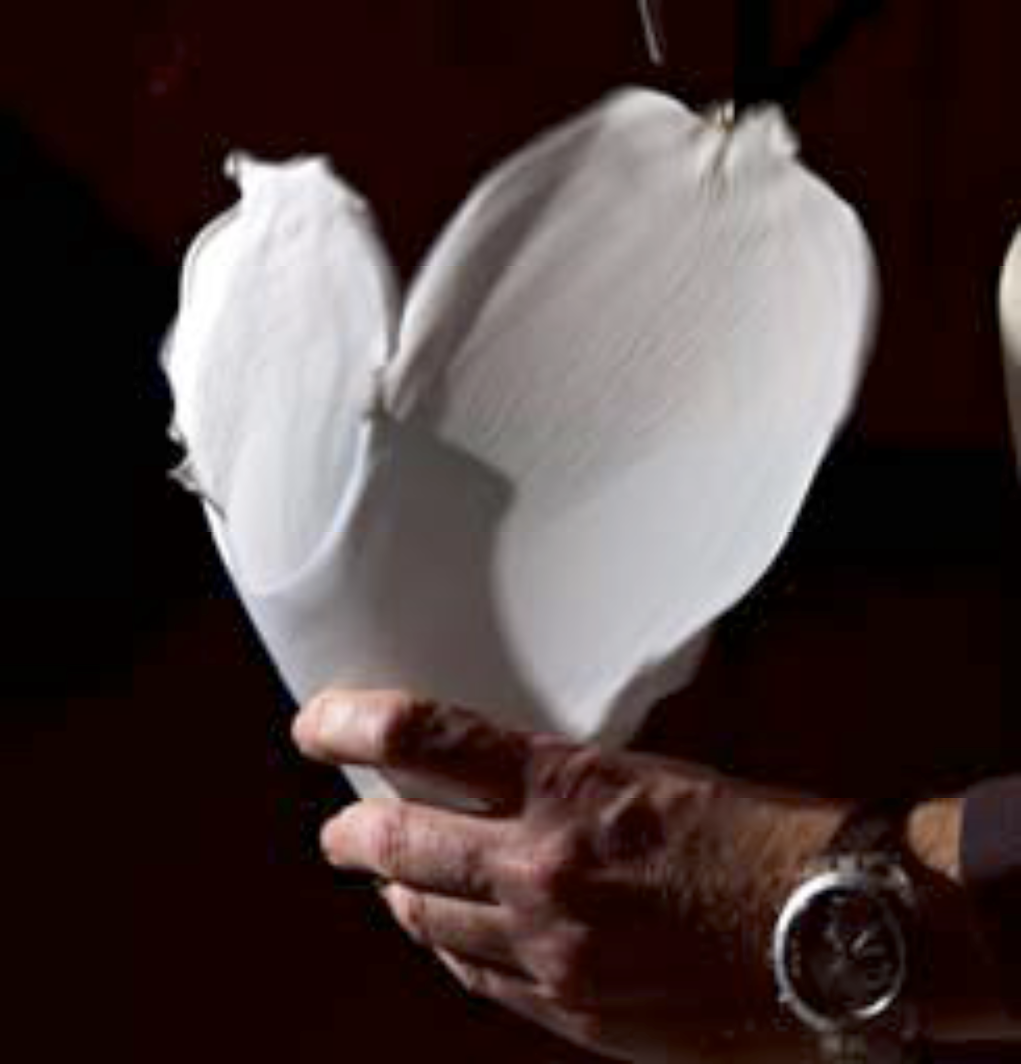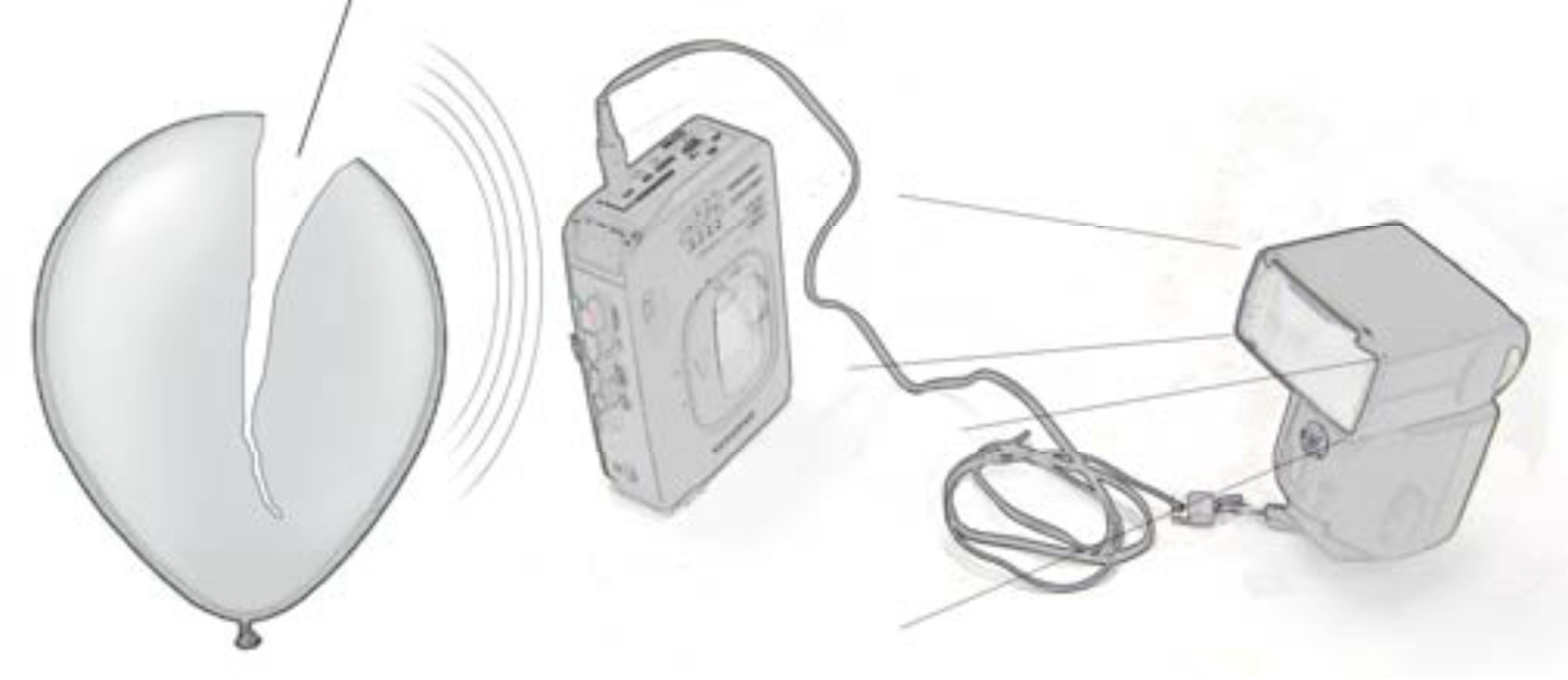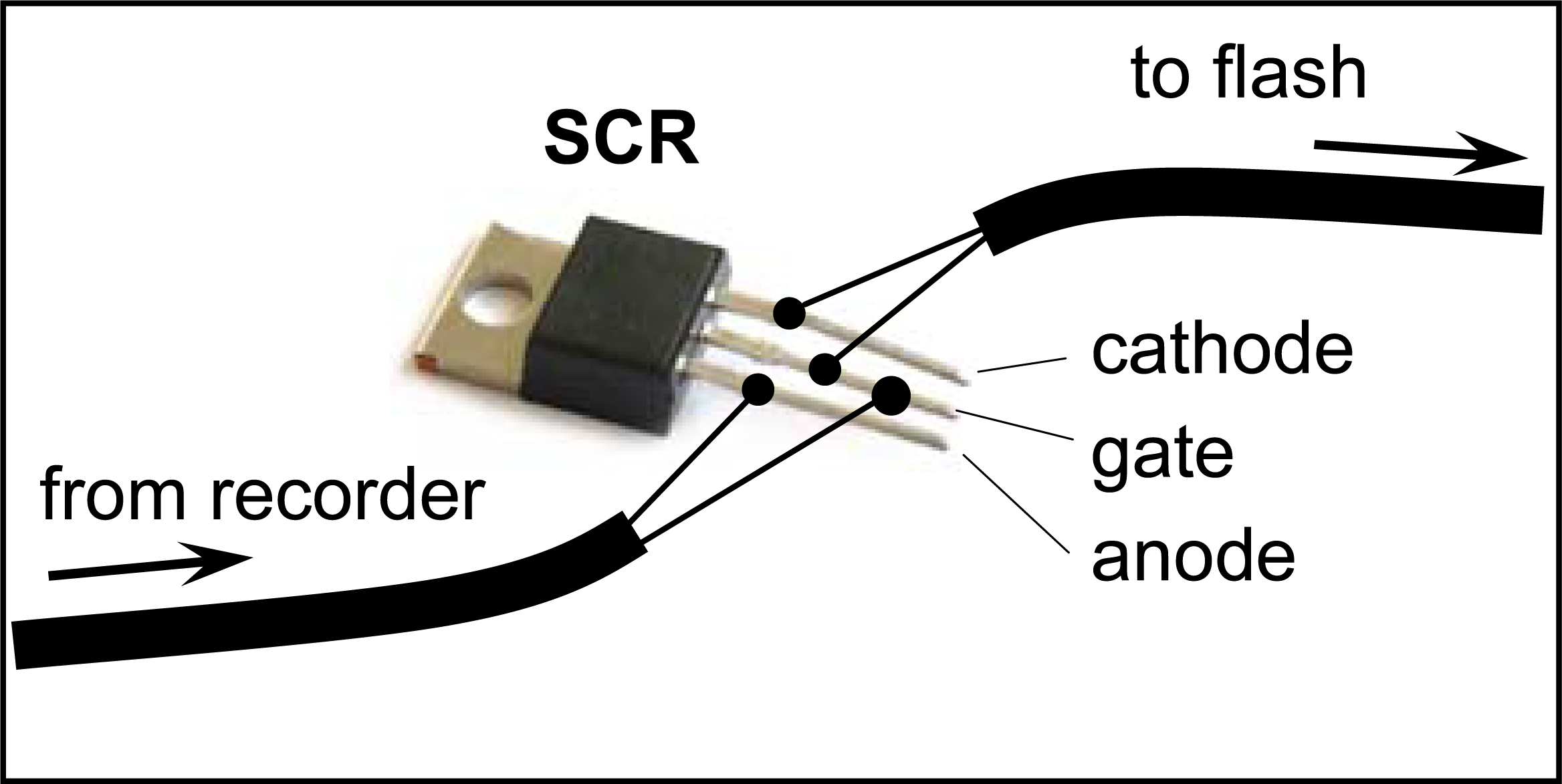Martin Fischer, Science Education Branch, Ontario Science Centre
martin.fischer@osc.on.ca
See the shards of a popping balloon, watch water drops suspended in the air or witness glass shattering — all of it seemingly frozen in time. Some of these events last less than one thousandth of a second but you can see them with your own eyes, thanks to the persistence of vision and a homemade sound trigger that releases a camera flash at exactly the right moment.

Figure 1 shows the setup. A high-speed event creates noise (A). When the sound reaches the microphone (B), the tape recorder (C) will send a current through the earphones wire (D). The current closes an electronic switch (E), which will trigger the flash (F).


 Figure 1: Equipment setup.
Figure 1: Equipment setup.

Figure 2 shows how to connect the wires to the electronic switch, which is a silicon controlled rectifier (SCR). Take a broken headset and cut off one ear bud. Strip the end of each lead, and then solder the leads to the anode and gate of the SCR. Then, solder the leads of a flash sync cord to the cathode and gate. If a flash has no sync connectors, connect the wires to the contacts on the hot shoe.
 Figure 2: Connection diagram.
Figure 2: Connection diagram.
Let's say we would like to observe a popping balloon. Place the flash so that it will illuminate the balloon, but not blind yourself or your audience. Plug the headset jack into the voice recorder and turn on both the recorder and the flash. Snap your fingers to test the setup. After filling a balloon almost to the bursting point, turn off the lights (ensuring the room has no outside light) and then stab the balloon with scissors. The popping sound triggers the flash and you'll see a still image for a fraction of a second. By varying the distance between the balloon and the recorder, you can adjust the timing of the flash. Your students might be surprised at how close or far you have to place the microphone to capture the right moment, and they are left with a very tangible impression of the timing. They can also calculate the timing of high-speed events using the speed of sound.
Sometimes you may get more than one flash in very short consecutive order. Most likely that is because the popping sound of the balloon reflects off the room's walls and triggers the flash again. We can solve this problem by adjusting the sensitivity of the recorder. If your recorder does not have that feature, wrap some foam around the microphone to dampen the loudness of the echo.
Most flash units can provide flashes as short as one 20-thousandths of a second. If they allow for manual setting, set it to the lowest power setting (e.g. 1/16). If they are fully automatic, put a reflective surface behind the object — the flash’s circuit will stop the light more quickly.
Of course, even with persistence of vision, you only get a short-lived glimpse at the event. Taking a picture allows you and your students to see all the detail. Recording pictures with a camera is quite simple, especially if it is fully manual. We use the self-timer and an exposure time of ten seconds on our digital SLR camera. First, focus on the balloon. Then turn off the light, start the self-timer and when you hear the shutter of your camera, pop the balloon. Wait until you hear the shutter of the camera closing, and turn the light on again.
We were also able to get good pictures with consumer digital cameras, as long as they allow turning off of the built-in flash. To take a picture, turn off the room light, focus the camera by pressing the shutter release halfway and then press all the way. Another person then pops the balloon. Wait maybe twenty seconds until you turn the room lights back on, because you want to record only the light from the triggered flash, but no other light.
Many things can be photographed that way, as long as they make a sound. Ask students to come up with questions that could be answered with this setup. For example, does a tennis ball flatten when hit by the racket? Are falling drops of water spherical or tear-drop-shaped? Enjoy!
The Ontario Science Centre uses science as the lens to inspire and actively engage people in new ways of seeing, understanding, and thinking about themselves and the world.
Links
- http://www.hiviz.com/ Fantastic source of information on high speed photography. Sells cheap kits for sound triggers (including one with a variable delay).
- http://www.diyphotography.net/ All kinds of tricks to create your own photography equipment without spending lots of money.
Column Editor: Ernie McFarland, Physics Department, University of Guelph, Guelph, Ontario, N1G 2W1 Tags: Technology




